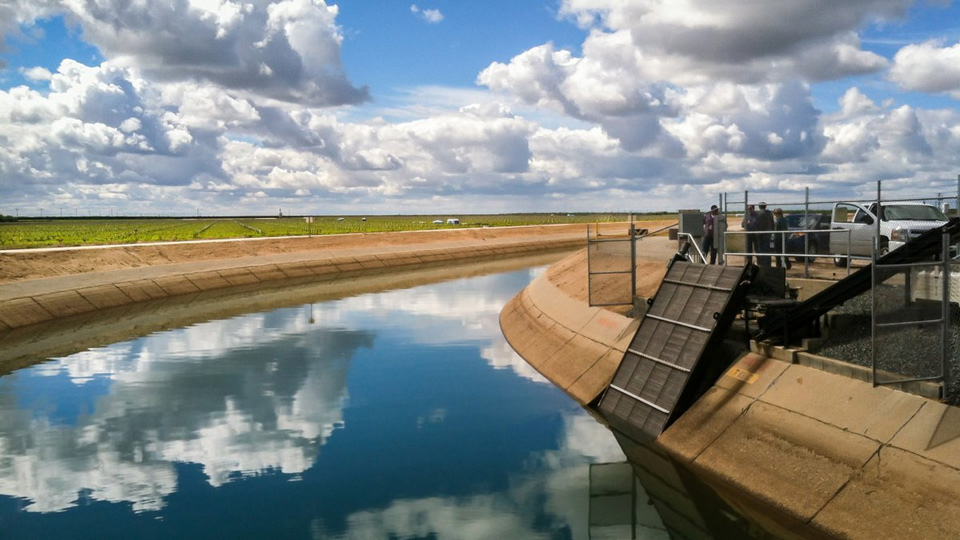
Central Valley Project
Credit: USBR
October 5, 2022 - SACRAMENTO, Calif. – After a third straight year of severe drought, the Bureau of Reclamation’s Central Valley Project begins the 2023 water year with 3.6 million acre-feet of water in storage — one of the lowest starting points in recent years. The CVP’s major reservoirs are (from north to south) Trinity, Shasta, Folsom, New Melones, Millerton, and the federal share of San Luis Reservoir. The water year begins Oct. 1 each year and ends Sept. 30.
“The 2022 water year was wetter than 2020 and 2021 in some areas of the state, but it was still well below average and came on such a large water supply deficit that it earned the title as the worst three-year drought on record with some of the driest winter months on record,” said Ernest Conant, regional director of the California-Great Basin region. “In order to navigate through this record-breaking drought, we had to modify operations outside of those considered in previous droughts and take a fresh look at every component of the CVP including facilities, contractors and environmental requirements.”
The 2022 water year began with an atmospheric river that brought record rain to Northern California in October 2021. That was a followed by a blast of winter storms in December that produced more than 6 feet of Sierra snow by the end of the month. Then, the storm door slammed shut, ushering three months of record dryness in northern California. The snowpack, vital to the state’s water supply, was virtually non-existent by April 1.
Reclamation responded with a 0% allocation to CVP agricultural contractors, an agreement to significantly reduce releases from Shasta and Trinity reservoirs to prioritize storage conservation and temperature management, reducing deliveries to Sacramento River Settlement Contractors, and releasing water from Friant Dam to fulfill obligations to senior water right holders, the San Joaquin River Exchange Contractors.
The table below shows reservoir capacities and end-of-year storage amounts for water years 2021 and 2022 for major CVP reservoirs. The following table compares end-of-year storages from water year 2017 to 2021. The amount of stored water at the end of the water year reflects the amount carried over into the new water year.
|
CVP Reservoir (Million Acre-Feet) |
Total Capacity (Million Acre-Feet) |
2022 WY Ending Storage (Million Acre-Feet) |
2021 WY Ending Storage (Million Acre-Feet) |
|---|---|---|---|
|
Trinity |
2.45 |
.55 |
.71 |
|
Shasta |
4.55 |
1.51 |
1.08 |
|
Folsom |
.97 |
.34 |
.23 |
|
New Melones |
2.42 |
.61 |
.84 |
|
Federal San Luis |
.96 |
.24 |
.04 |
|
Millerton |
.52 |
.34 |
.31 |
|
Total |
11.8 |
3.6 |
3.21 |
Comparison of Previous End-of-Year Storage in Major CVP Reservoirs (Million Acre-Feet)
|
Year |
2022 |
2021 |
2020 |
2019 |
2018 |
2017 |
1977 (Driest Year) |
1983 (Wettest Year) |
|
Total |
3.6 |
3.21 |
6.01 |
9.02 |
6.8 |
10.3 |
1.5 |
9.8 |
In anticipation of continued drought in 2023, Reclamation will pursue a water management strategy that emphasizes providing supplies for health and safety needs; maintaining suitable water quality in the Delta, which is the source of municipal drinking water for many communities; protecting species by meeting environmental requirements; conserving storage to meet future critical needs; and urban and agricultural water supplies.
The CVP is the largest single source of irrigation water in California, typically supplying water to about 3 million acres of agricultural land in the San Joaquin and Sacramento valleys. The CVP also provides urban water for millions of people and industrial water, including that essential to the San Francisco Bay Area’s economy. Water from the CVP is also vital for the environment, wildlife and fishery restoration, including providing water to 19 refuges in the Central Valley, and hydroelectric power production.
During the 2022 water year, CVP powerplants generated about 2 billion kilowatt-hours, very much below an average year of about 4.5 billion kilowatt-hours. Project use is anticipated to have consumed about 20 percent of this energy; the remaining energy was made available to public agency contractors serve by the Western Area Power Administration.
Reclamation continues to work with federal and state partner agencies and CVP water and power customers to prepare for potentially ongoing drought conditions. Another consecutive dry water year will require conservative planning and assertive multiagency action.
For additional storage information, visit www.usbr.gov/mp/cvo; for additional information on the 2022 water year, visit www.usbr.gov/mp/drought.
Source; USBR








